Curve Finance Review

Curve Finance is a decentralized exchange liquidity pool built on Ethereum – it allows for stablecoin trading and liquidity pool providers to earn income from trading fees, with minimal risk. The protocol gives users and smart contracts the ability to trade between stablecoins (DAI and USDC for example) with low slippage and fees due to its high available liquidity.
Headquartered in Switzerland, it serves as one of the largest DeFi platforms by volume and has amassed tremendous liquidity in slightly over a year of just being launched. Michael Egorov [LinkedIn] is the founder and CEO, and he launched the first version of Curve in January 2020.
The project is also well-known for its unique design – it uses an antique and retro look and feel, which has been welcomed and deemed appealing by the community. Curve is continuing its ascent in the DeFi realm and continues to attract new users as it gains more liquidity.
Curve Finance Fees
Trading Fees
Swapping stablecoins on the platform will result in paying a small transaction and rebalancing fee (typically 0.04%), although the exchange rates are extremely reasonable. Before you make a transaction or swap, the total amount you will receive plus the fee will be displayed for your convenience.
Therefore, Curve doesn’t technically charge any trading fees per se.
Withdrawal fees
The fee is 0 depositing and withdrawing tokens symmetrically in the same proportion as the pool. However, if you deposit or withdraw only 1 coin, then you’ll pay 50% of the trading fee.
By going to the “Stats” tab within each pool, you can click on any point within the chart to see the past market depth.
Trading View
For your average trader, the trading app/interface isn’t the most straightforward, but it gets the job done.
You are able to select between the different stablecoin pairs (i.e. CDAI-CUSDC) and timeframes. Click Select and Update charts in order to view the stablecoin pair of your choice. On the right hand side, there are two indicators:
- The OHLC (open-high-low-close chart) which represents the different price movements.
- The volume to show how much has been traded respective to each pair.
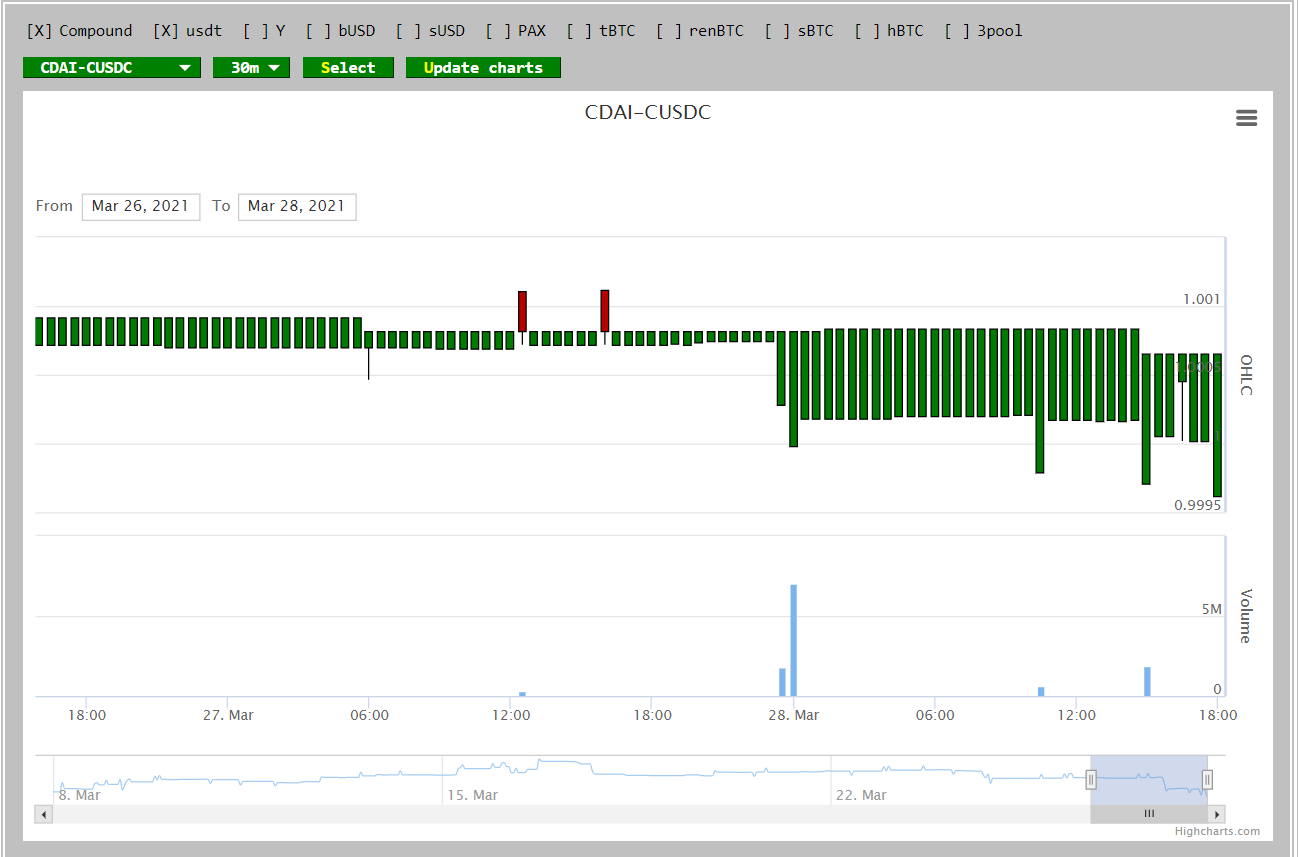
Scrolling down the page, you will then find the depth chart (as seen below) where you can see the buy and sell prices of the selected assets.
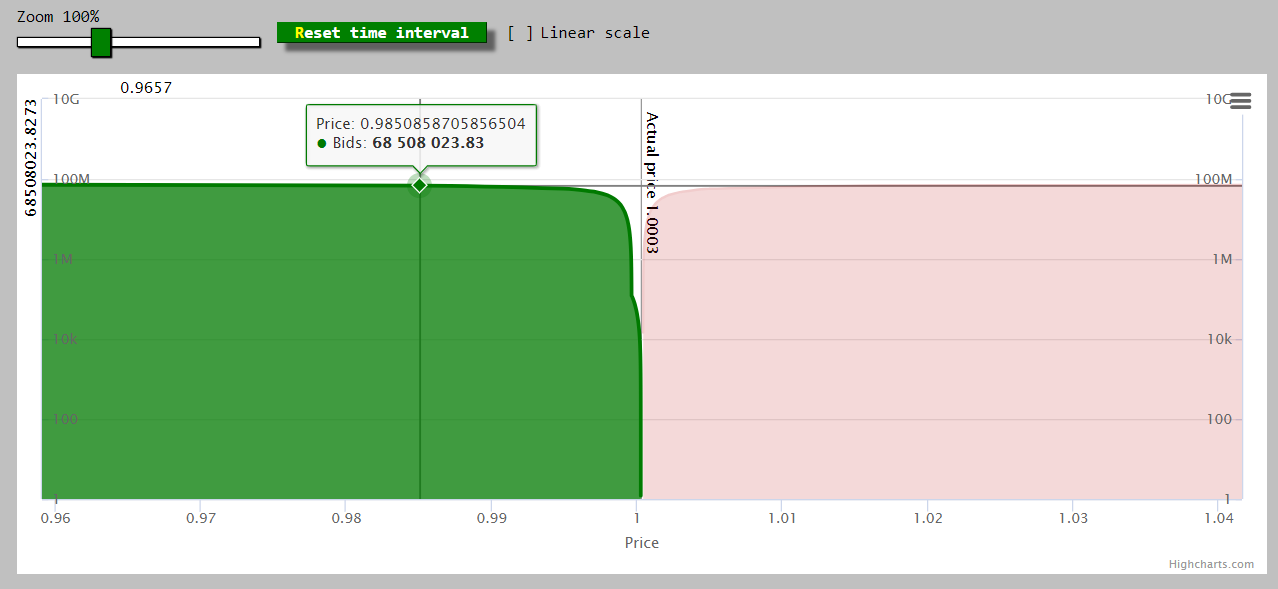
Swap
Curve exchange gives you the option to easily swap one stablecoin for another. In the image below, you can see an example of how easy it is to swap DAI for USDC. The exchange rate and associated fee is displayed, so you know the exact amount you will be receiving before trading.

StableSwap Pools
There are a large variety of choices of different pools to choose from on the platform – the total amount of current pools is over 30. The below image contains a few examples, with the pool name, base and rewards APY, and total volume. You have the ability to select which pools you want to view in USD, BTC, ETH, or “others.”
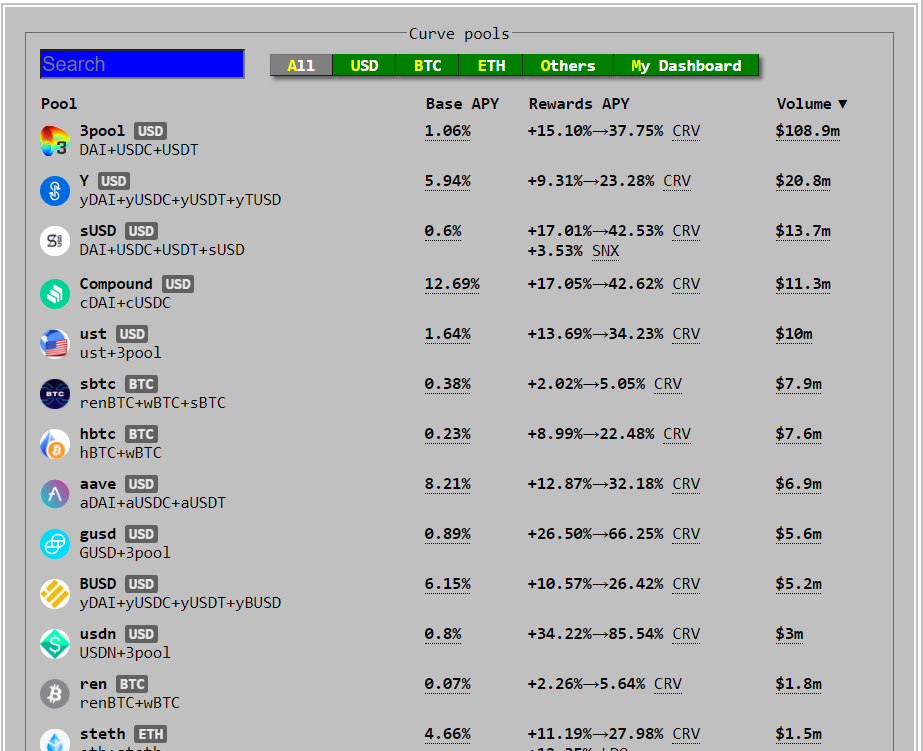
yEarn Algorithm and yPools (Liquidity pools)
yEarn is the algorithm that provides liquidity to the protocols. yPools are the liquidity pools that use the yEarn algorithm to automatically balance stablecoins with the most optimal rates across the other DeFi platforms – examples of these are Yearn Finance and Compound, to name a few.
Supported Countries and Cryptos
As Curve Finance is completely decentralized, anyone from anywhere is able to use the platform, as long as they have an Ethereum-compatible wallet. The great thing about this is that it has worldwide application, thereby expanding its use case and allowing anyone to provide liquidity and increase the overall volume on the platform.
The project’s main country and headquarters is in Switzerland, where its founder is also based in.
It offers over 30 different cryptos you can swap, including all major stablecoins and other coins such as LINK, ETH, RSV, and more. Many wrapped tokens are also available in the form of ETH and BTC, to name a few.
Deposit and Withdrawal Methods
Depositing and withdrawing your digital tokens can be facilitated via your Ethereum wallet (i.e. MetaMask), so it’s easier than ever to manage your funds and interact with the platform. Your tokens are also stored on your Ethereum wallet and can be deposited or withdrawn at any time.
Only crypto-crypto transactions are supported, as you cannot directly deposit fiat onto Curve. Instead, you will need to go through a fiat-supported exchange in order to make your crypto purchase and transfer it to your Ethereum wallet.
The different supported Ethereum wallets are below:
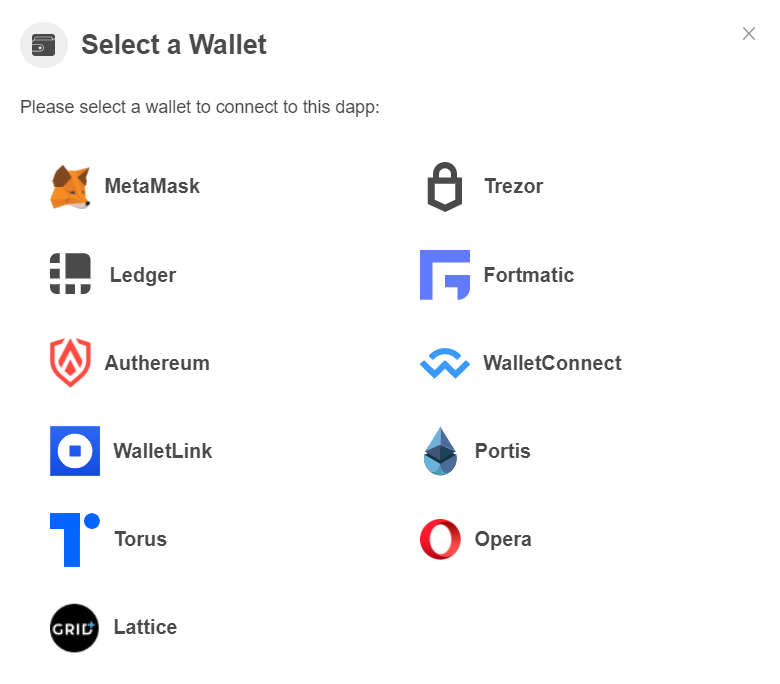
CRV Token
CRV is Curve Finance’s governance token that helps power the ecosystem. CRV can be locked from 1 to 4 years, and holders will receive veCRV in order to vote on certain decisions for the protocol and receive generated fees as rewards.
Users can deposit CRV into several different pools to receive an additional 2.5x for a bigger dollar amount per veCRV, which is an enticing added benefit. CRV can also be staked on the platform to receive interest and earned through yield farming. The yield farming rates are high and meant to incentivize existing holders to continue holding and invite new users to jump on board.
Curve DAO
In August 2020, Curve launched a decentralized autonomous organization (DAO) to help manage changes to the protocol. The CRV token controls the Curve DAO protocol, ensuring that this system remains decentralized and that the power remains with the users of the platform to make the appropriate/necessary changes.
When you navigate to the DAO page, you can see the gauge relative weight of each token, the voting power, and the liquidity gauge for each individual pool.
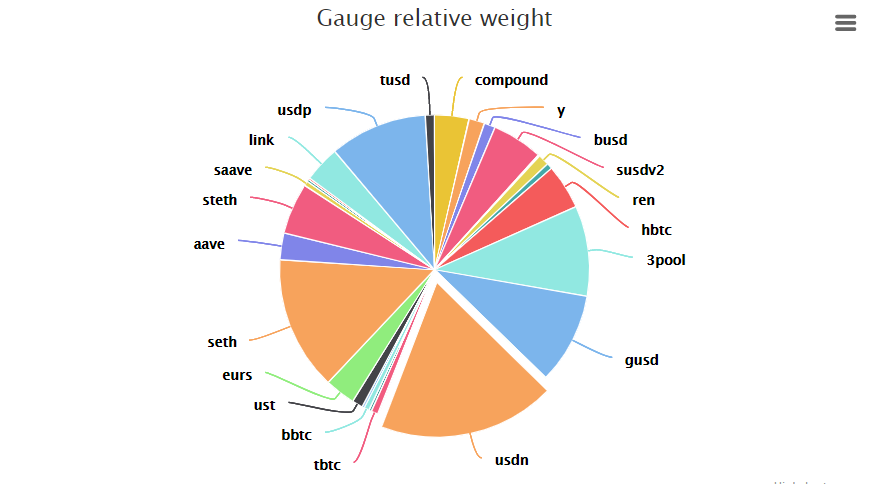
All of this important information is completely out in the open, so everyone can see the different distributions and status of the protocol.
Curve x Polygon
Curve has now integrated with Polygon (formerly known as Matic), an advanced layer 2 solution allowing for faster speeds and much cheaper transactions than on Ethereum.
Swaps can currently be executed in DAI, USDC, and USDT. There is one “Aave Pool” where you can deposit a variety of stablecoins to earn rewards.
Curve x Fantom
Curve has also integrated Fantom into its protocol. Fantom is a revolutionary open-source smart contract platform for digital assets and dApps, able to facilitate instantaneous transactions and incredibly low fees.
Users can currently swap with DAI, USDC, and fUSDT. They can also provide liquidity to two pools, 2pool and fUSDT by depositing the supported stablecoins.
How to use the Curve Finance Protocol
One of the greatest benefits of using Curve Finance is the variety of options that you have – but the associated cost to this is the complexity of using the platform, as it can be somewhat confusing. To begin, you will need to connect your Ethereum wallet with the protocol. Once this is complete, stay on the homepage – you will have the option to either swap tokens or provide tokens to one of the liquidity pools.
To swap, select the two coins you want to exchange and click Sell. Your Ethereum wallet should pop up and ask you to approve Curve to interact with your wallet balance Once that’s done, complete the transaction and you’re done!
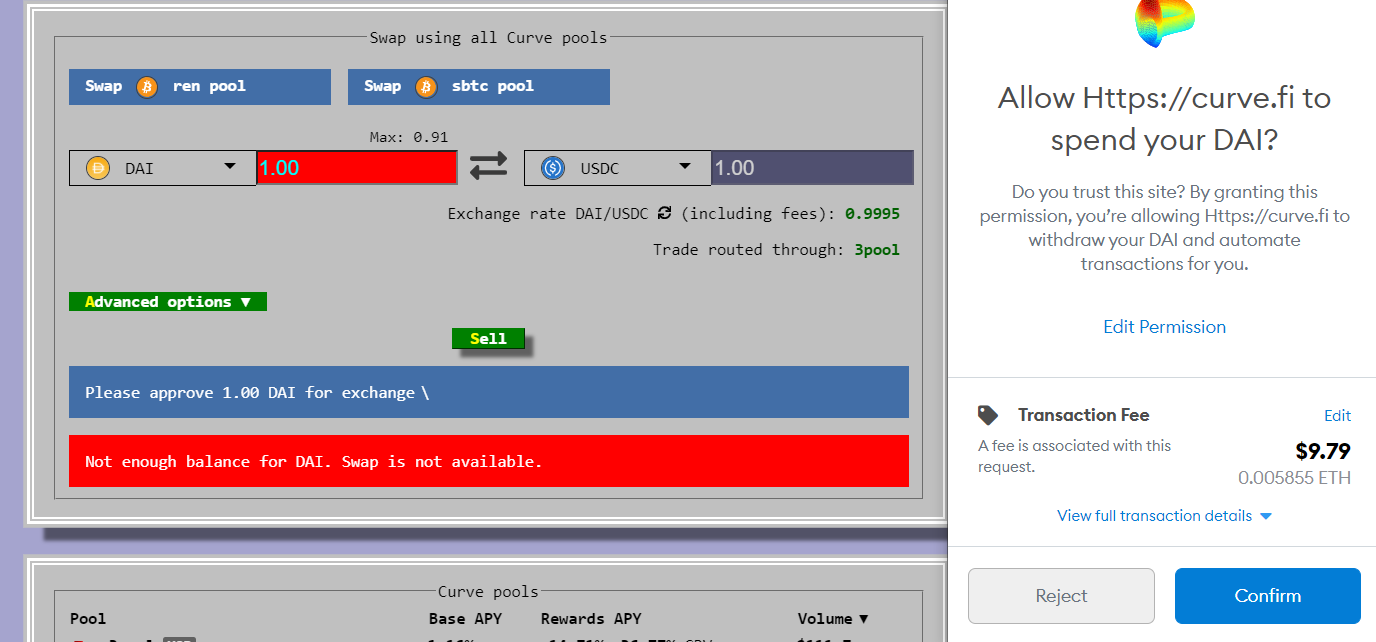
If you want to use a Curve pool, scroll down on the homepage until you select the one you want. For this example, we’ve chosen the BUSD pool. Here, you can view the exchange rate (including all fees) and select which token you want to trade between the various coins available – the process is similar to the previous tutorial on swapping.
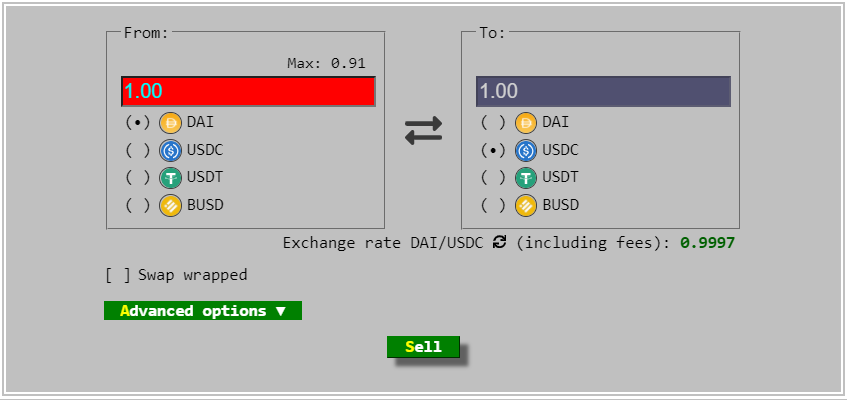
You can also explore many other features on the platform, such as “Pay,” “Trade,” “Use CRV,” and more.
Security
Curve’s smart contracts were audited by Trail of Bits and Quantstamp, so security measures have been taken.
Whenever using a DeFi protocol, it is recommended to work with smaller amounts in the event of a potential issue to occur, for example while yield farming or staking. As the protocol is decentralized, it cannot access your tokens without you specifically authorizing a transaction. So overall, it is deemed to be quite safe compared to centralized exchanges, as Curve cannot be hacked due to the way it’s built.
Conclusion
There is no doubt that Curve Finance is changing the game as a leading DeFi liquidity protocol. The benefits are clear, but there are also a few things to consider before becoming a true adopter. As it’s only really been on the market for a little over a year, it’s quite impressive how far it’s come and how much recognition it’s received from institutions and the crypto community alike.
The CRV token was also recently listed on Coinbase, drawing additional attention to the platform and cementing itself further in the crypto sphere.
Let’s examine some of the highlights regarding the pros and cons of using Curve, so you can assess if you’re ready to give it a shot yourself:
Pros
- Virtually unmatched exchange rates on stablecoins
- Possesses some of the highest liquidity/volume of any DEX
- Decentralized with lots of incentives for CRV holders
- Large amount of liquidity pools to select from
- Yield farming is available, with very generous interest rates
- Layer 2 technologies for leveraging blockchains other than Ethereum
Cons
- Very complex interface for a basic/average DeFi or crypto user
- Gas fees are extremely high, and they need to be paid in order to approve and trade transactions on the platform (although this applies to any DEX)
- Limited amount of trading pairs (mostly stablecoins and a few other large-cap tokens)
- Website and platform colors/design (although to many, this is considered an advantage because it distinguishes Curve from other protocols)
